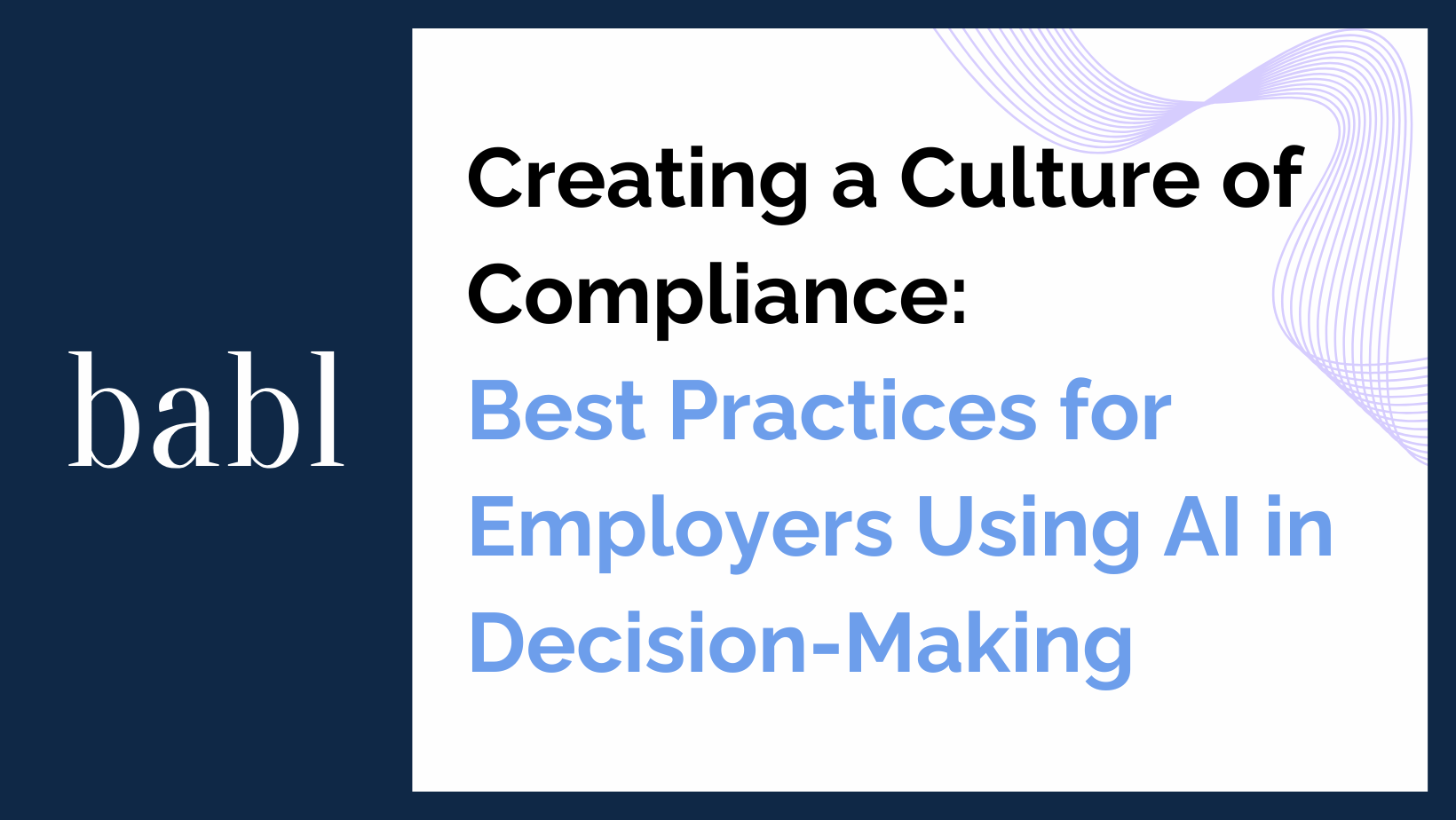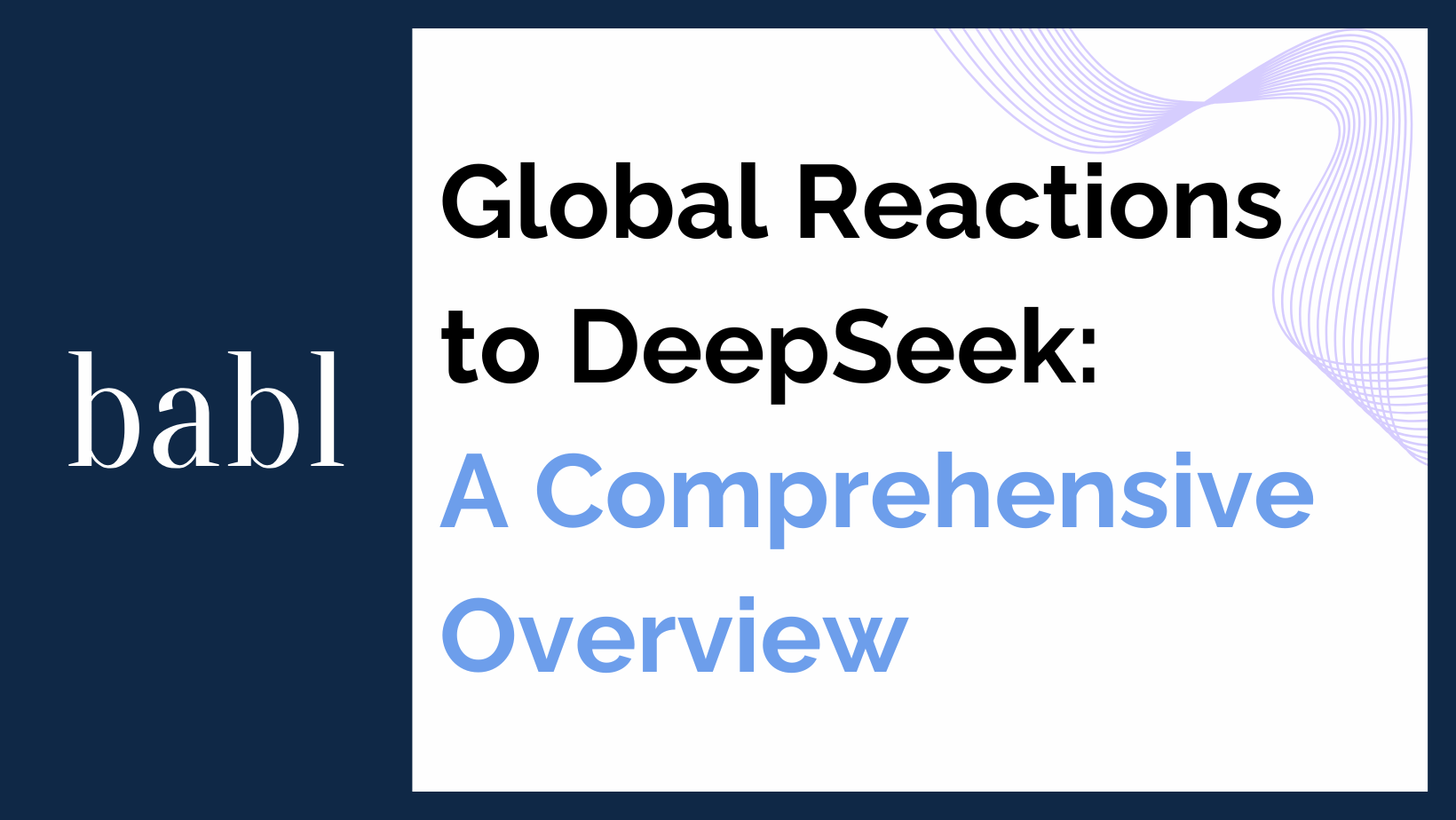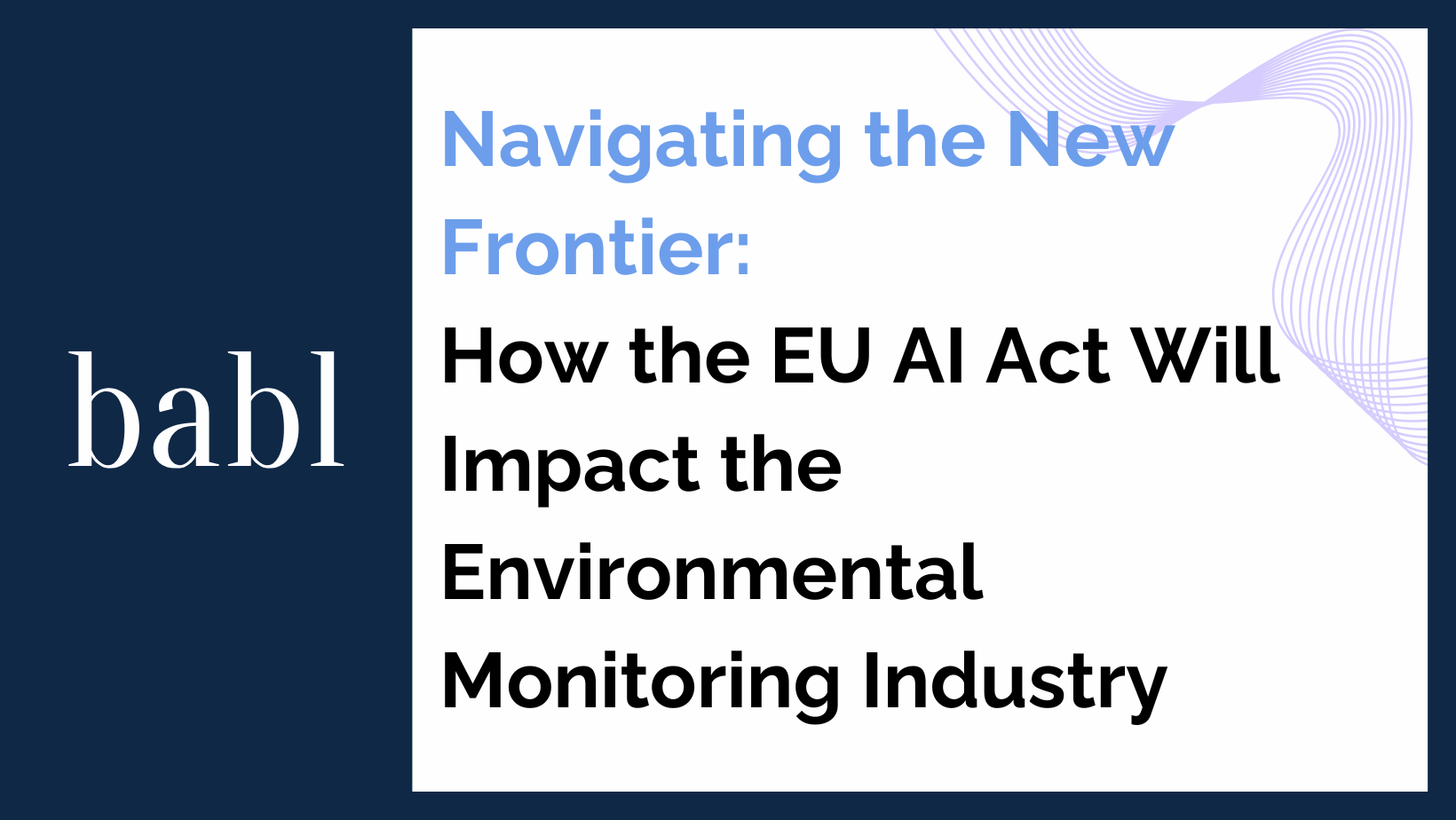The rise of artificial intelligence (AI) in business operations, particularly in human resources (HR) and decision-making, offers numerous benefits such as increased efficiency, accuracy, and innovation. However, the integration of AI also brings significant ethical and compliance challenges. Employers must ensure that their use of AI aligns with legal standards and fosters a culture of compliance and ethical use. This blog post explores best practices for creating a culture of compliance in the workplace, emphasizing the importance of trust and transparency in AI-driven decision-making.
Understanding the Importance of AI Compliance
Compliance with AI regulations is not just about avoiding legal penalties; it’s about ensuring fairness, transparency, and ethical standards in business operations. Regulations like New York Local Law 144, which mandates bias audits for Automated Employment Decision Tools (AEDTs), highlight the need for businesses to be vigilant about the ethical use of AI. A culture of compliance helps organizations maintain trust with employees, customers, and stakeholders, ultimately enhancing their reputation and fostering a positive workplace environment.
Best Practices for Creating a Culture of Compliance
-
Leadership Commitment
-
- Set the Tone at the Top: Leaders must demonstrate a strong commitment to compliance and ethical AI use. This includes setting clear expectations, modeling ethical behavior, and prioritizing compliance in decision-making processes.
-
- Communicate Values and Expectations: Regularly communicate the importance of compliance and ethical AI use to all employees. This can be done through meetings, newsletters, and training sessions, ensuring that everyone understands the organization’s values and expectations.
-
Establish Clear Policies and Procedures
-
- Develop Comprehensive AI Policies: Create detailed policies outlining the ethical use of AI, compliance requirements, and procedures for addressing potential issues. These policies should be easily accessible to all employees.
-
- Implement Robust Compliance Procedures: Establish procedures for monitoring and enforcing compliance with AI regulations. This includes regular audits, data quality checks, and mechanisms for reporting and addressing non-compliance.
-
Training and Education
-
- Provide Ongoing Training: Offer regular training sessions on AI compliance and ethics. This helps employees stay informed about the latest regulations, best practices, and the ethical implications of AI use.
-
- Promote Continuous Learning: Encourage employees to stay updated on AI developments and compliance trends. Providing access to resources such as webinars, online courses, and industry publications can support continuous learning.
-
Foster a Transparent and Open Culture
-
- Encourage Open Communication: Create an environment where employees feel comfortable discussing compliance concerns and ethical issues related to AI. This can be achieved through open-door policies, anonymous reporting channels, and regular feedback sessions.
-
- Transparency in AI Use: Be transparent about how AI is used in decision-making processes. Provide clear explanations of how AI tools work, the data they use, and the measures in place to ensure fairness and compliance.
-
Engage Cross-Functional Teams
-
- Collaborate Across Departments: Involve different departments, such as HR, legal, IT, and compliance, in developing and implementing AI policies and procedures. This ensures a comprehensive approach to compliance and ethical AI use.
-
- Establish a Compliance Committee: Form a committee dedicated to overseeing AI compliance efforts. This committee can include representatives from various departments and provide regular updates to senior leadership.
-
Regular Audits and Assessments
-
- Conduct Bias Audits: Regularly audit AI tools for bias and other compliance issues. Engage independent auditors to ensure impartiality and enhance the credibility of audit results.
-
- Assess Data Quality and Integrity: Implement data quality checks and validation processes to ensure the accuracy and integrity of the data used by AI tools. This helps prevent biased or inaccurate outcomes.
-
Implement Ethical AI Practices
-
- Bias Mitigation Strategies: Develop and implement strategies to mitigate bias in AI tools. This can include using diverse training data, regularly updating algorithms, and involving diverse teams in AI development.
-
- Ethical AI Frameworks: Adopt ethical AI frameworks and guidelines, such as those proposed by the National Institute of Standards and Technology (NIST). These frameworks provide a structured approach to managing AI risks and ensuring ethical use.
-
Monitor Regulatory Changes
-
- Stay Informed: Keep abreast of changes in AI regulations and compliance requirements. This includes monitoring updates from regulatory bodies, industry associations, and legal experts.
-
- Adapt Policies and Procedures: Regularly review and update AI policies and procedures to reflect changes in regulations and best practices. This ensures ongoing compliance and ethical AI use.
-
Encourage Employee Involvement
-
- Empower Employees: Empower employees to take an active role in compliance efforts. This can include involving them in developing AI policies, participating in compliance committees, and providing feedback on AI use.
-
- Recognize and Reward Compliance Efforts: Acknowledge and reward employees who demonstrate a strong commitment to compliance and ethical AI use. This can help reinforce the importance of compliance and motivate others to follow suit.
-
Leverage Technology for Compliance
-
- Compliance Management Tools: Utilize technology to streamline compliance efforts. This can include compliance management software, AI-driven audit tools, and data analytics platforms to monitor and enforce compliance.
-
- AI Ethics and Compliance Dashboards: Implement dashboards that provide real-time insights into AI compliance efforts. These dashboards can help track progress, identify areas for improvement, and report on compliance status to stakeholders.
The Benefits of a Culture of Compliance
-
Enhanced Trust and Reputation
-
- Building Trust: A culture of compliance fosters trust with employees, customers, and stakeholders. Demonstrating a commitment to ethical AI use and compliance enhances your organization’s reputation and builds long-term trust.
-
- Positive Workplace Environment: A transparent and open culture where employees feel comfortable discussing compliance concerns contributes to a positive workplace environment. This can improve employee morale, engagement, and retention.
-
Reduced Legal and Financial Risks
-
- Avoiding Penalties: Compliance with AI regulations helps avoid legal penalties and fines associated with non-compliance. Regular audits and adherence to ethical standards reduce the risk of legal issues.
-
- Mitigating Bias: Implementing bias mitigation strategies and conducting regular audits help prevent biased outcomes in AI-driven decision-making. This reduces the risk of discrimination claims and enhances the fairness of AI tools.
-
Improved Decision-Making
-
- Data Quality and Integrity: Ensuring the accuracy and integrity of data used by AI tools leads to better decision-making. High-quality data and regular audits help identify and address potential issues early.
-
- Ethical AI Use: A culture of compliance promotes the ethical use of AI, leading to more responsible and fair decision-making processes. This enhances the overall effectiveness of AI tools and aligns with organizational values.
-
Competitive Advantage
-
- Proactive Compliance: Organizations that proactively address AI compliance and ethical use gain a competitive advantage. By demonstrating a commitment to ethical AI use, these organizations can attract and retain customers, employees, and partners.
-
- Innovation and Growth: A culture of compliance fosters innovation by encouraging responsible AI development and use. Organizations that prioritize ethical AI use are better positioned for sustainable growth and long-term success.
Conclusion: Building a Culture of Compliance in AI-Driven Decision-Making
Creating a culture of compliance is essential for organizations using AI in decision-making processes. By prioritizing ethical AI use, transparency, and adherence to regulations, businesses can build trust, enhance their reputation, and mitigate risks. Implementing best practices such as leadership commitment, clear policies and procedures, ongoing training, and regular audits helps foster a culture of compliance and ensures the responsible use of AI.
As AI continues to transform business operations, organizations must stay informed about regulatory changes and adapt their compliance efforts accordingly. By leveraging technology, engaging cross-functional teams, and encouraging employee involvement, businesses can navigate the complexities of AI compliance and build a foundation of trust and ethical AI use.
Creating a culture of compliance is not just a legal obligation; it’s a commitment to ethical standards, fairness, and transparency. By embracing this commitment, organizations can harness the full potential of AI while ensuring the ethical and responsible use of this transformative technology.
Need Help?
If you want to have a competitive edge when it comes to AI regulations and laws, don’t hesitate to reach out to BABL AI. Their team of Audit Experts can provide valuable insights on implementing AI.





